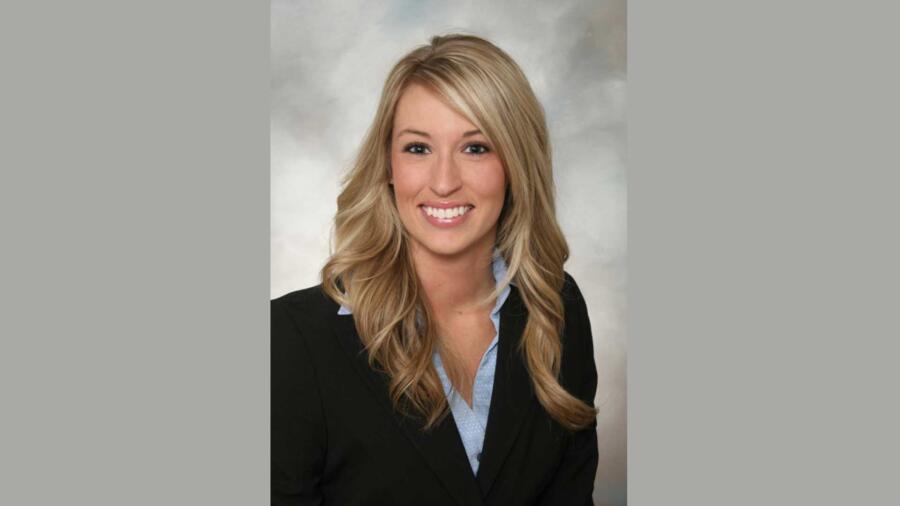Why Violence and Murder Is a Real Concern for Real Estate Agents
On April 8, 2011, a routine open house took a tragic turn in West Des Moines, Iowa. Ashley Okland, a 27-year-old real estate agent, was showcasing a model townhome under a clear spring sky. What should have been just another showing ended in tragedy.
A nearby worker heard unusual noises inside the unit. Curious and concerned, they went to investigate. Inside, they found Okland on the floor—unresponsive and bleeding. Emergency crews rushed her to the hospital, but she had already suffered two fatal gunshot wounds.
Nothing appeared stolen. No signs of forced entry or struggle were found. Despite hundreds of leads and interviews, authorities never solved her case. More than a decade later, her murder remains a haunting mystery.
The Beverly Carter Case: A Chilling Confirmation
Ashley Okland’s murder was horrifying, but it wasn’t isolated. Just three years later, another tragedy shook the real estate community.
In September 2014, Beverly Carter, a top-performing real estate agent from Arkansas, vanished after showing a home in a remote area outside Little Rock. For days, friends and colleagues prayed for her safe return. But their worst fears came true when police discovered her body buried in a shallow grave.
Aaron Lewis and his estranged wife, Crystal Lowery, had set up the showing to lure her. Their plan? Kidnap Carter and demand ransom. When that failed, they murdered her.
When asked why they targeted Carter, Lewis’s cold reply shocked many: “Because she was just a woman that worked alone—a rich broker.”
Real Estate: One of America’s Most Dangerous Jobs
These horrifying stories aren’t one-offs. They reflect a growing threat in the real estate profession.
According to the U.S. Bureau of Labor Statistics, 23 real estate professionals died from workplace violence in 2022. Meanwhile, the National Association of Realtors (NAR) reports that 2% of agents have experienced crimes on the job. That translates to thousands of agents exposed to robbery, physical assault, and even attempted murder.
Worse still, 23% of agents admit to regularly fearing for their safety. And while female agents often receive the spotlight in these stories, male agents have also become targets. The danger knows no gender.
How Real Estate Agents Are Responding to the Risk
For Jen Stanbrough, a managing broker and close friend of Ashley Okland, the tragedy sparked change. Before Okland’s death, Stanbrough never considered safety precautions part of her job. Afterward, everything changed.
She helped create the Des Moines Area Association of Realtors’ Safety Committee and co-authored the REALTOR® Safety Pledge. She also contributed to developing the Safe Showing Listing Form used by agents and sellers to plan for safer showings.
At a 2023 REALTOR® Safety Month webinar, Stanbrough shared this sobering message:
“It can happen to you, to one of your friends, a colleague, or family member. I don’t tell you that to scare you—I want you to be prepared.”
Practical Safety Strategies for Real Estate Agents
Real estate professionals face unique risks. But by following a few practical safety steps, they can reduce their vulnerability significantly.
Screen Your Clients
Before scheduling showings, check clients’ backgrounds. Search their names online. Scan social media. These steps take minutes but can uncover potential red flags.
Keep Comprehensive Records
Maintain detailed client information—names, phone numbers, home addresses, and notes. Use digital calendars and share your schedule with colleagues or family.
Stay Connected
Apps like Life360, Find My Phone, and Bsafe allow others to track your location in real time. Always let someone know where you’re going and when to expect you back.
Be Alert to Your Surroundings
Park in well-lit areas. Stay aware of escape routes. Avoid distractions—don’t scroll your phone while walking to a property.
Stay Smart During Open Houses
Work with a partner if possible. Always keep clients in front of you and maintain personal space. Consider using portable security cameras that stream live footage.
Trust Your Gut
If something feels wrong, it probably is. Don’t second-guess your instincts. Leave immediately and notify someone.
Why Safety Awareness Is Key in Real Estate
Despite improvements in industry protocols, many agents still overlook personal safety in pursuit of closing deals. Stanbrough candidly states, “We get complacent. But we have to train and implement safe practices daily.”
Real estate offers independence, flexibility, and high income potential. Yet it also brings real risks. By staying vigilant and using available tools, agents can focus on success—without becoming victims.
After all, real estate isn’t just about making the sale. It’s about making it home safely at the end of the day.
Frequently Asked Questions
Why are real estate agents at risk of violence?
Real estate agents often work alone, meet unknown clients, and visit vacant or remote properties. These conditions increase vulnerability to potential threats.
What safety tools are recommended for agents?
Apps like Life360, Find My Phone, and personal safety alarms are commonly used. Portable security cameras and smartwatches can also be helpful.
What is the REALTOR® Safety Pledge?
It’s a commitment made by real estate professionals to prioritize personal safety and promote best practices across the industry.
How can brokers protect their agents?
Brokers can provide safety training, offer buddy systems for showings, and promote the use of digital tracking tools and background checks.
Are male agents targeted as well?
Yes. While female agents are often highlighted in safety reports, male agents also face serious threats and violent encounters.
What should agents do if they feel unsafe during a showing?
Leave the situation immediately, contact someone you trust, and file a report if necessary. No commission is worth personal safety.

